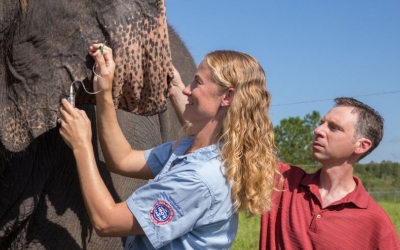- Latest news▼
-
15:32, April 26 ESCMID: New method of purifying the air with ultraviolet light could protect world from new pandemic

-
08:43, April 26 Enzymes that convert different blood groups into first group are discovered

-
19:41, April 25 Children’s Hospital Los Angeles and International Center of Professional Development Allergy/Immunology Conference

-
17:31, April 25 JAMA: patient grew long, curly eyelashes because of chemotherapy

-
11:08, April 25 Mpox epidemic declared in Republic of the Congo

-
08:31, April 25 OU: quitting smoking 4 times more likely to cure laryngeal cancer

-
01:20, April 25 Paralyzed man in China writes hieroglyphs using neural implants placed in his brain

-
15:11, April 24 Zombie deer disease possibly linked to hunters’ deaths

-
12:27, April 23 Appetite: Scientists found out the secret to the appeal of large portions of fast food

-
10:33, April 23 Scientists test new approach to fighting viruses

-
08:38, April 23 Ketamine may help with postpartum depression

-
22:12, April 22 Unhealthy amount of sugar found in baby food products of a well-known brand

-
19:41, April 22 Air pollution puts health of more than 1.6 billion workers globally at risk

-
17:25, April 22 Scientists found baked goods and lack of sleep to be more dangerous than alcohol

-
16:02, April 22 342 cases of measles recorded in Armenia so far in 2024

All materials
Why is elephant cancer rare? Answer might help treat humans

Cancer is much less common in elephants than in humans, even though the big beasts' bodies have many more cells. That's a paradox known among scientists, and now researchers think they may have an explanation — one they say might someday lead to new ways to protect people from cancer.
Compared with just one copy in humans, elephants' cells contain 20 copies of a major cancer-suppressing gene, two teams of scientists report. The gene helps damaged cells repair themselves or self-destruct when exposed to cancer-causing substances.
The findings aren't proof that those extra p53 genes make elephants cancer-resistant, but if future research confirms it, scientists could try to develop drugs for humans that would mimic the effect.
Dr. Joshua Schiffman, a pediatric cancer specialist at the University of Utah who led one of the teams, began his research after hearing a lecture a few years ago about Peto's paradox. That refers to the fact that large animals including elephants and whales, have comparatively low cancer rates even though they have many more cells than smaller species. Cancer involves uncontrolled cell growth.
The lecture speaker mentioned that elephants seemed to have extra copies of the p53 gene. Schiffman's patients include children with incomplete p53 genes because of a condition called Li-Fraumeni syndrome, which greatly increases their chances of developing cancer. So Schiffman sought to find clues from the blood of eight elephants, Ringling Bros. circus animals and local zoo animals.
His team — as well as a second group of scientists — pinned down the size of the elephants' surplus — 20 copies. The second team found many other species have only one copy, just like humans.
Schiffman and his colleagues compared how elephant cells reacted to radiation, compared with cells from 10 healthy humans and 10 patients with Li-Fraumeni syndrome.
The elephant cells self-destructed at twice the rate of healthy human cells and more than five times the rate of cells from patients with the syndrome. Cells that don't self-repair or self-destruct when exposed to carcinogens become prone to developing cancer.
The work was published Thursday in the Journal of the American Medical Association.
Follow NEWS.am Medicine on Facebook and Twitter
- Video
- Event calendar
- Children’s Hospital Los Angeles and International Center of Professional Development Allergy/Immunology Conference
- First Armenian-German Conference entitled “Heart Failure Spring School”
- Allogeneic bone marrow transplant in case of hematological malignancy performed in Armenia for first time
All materials
- Archive
- Most read
month
week
day
- Scientists found baked goods and lack of sleep to be more dangerous than alcohol 1044
- Next pandemic likely to be triggered by flu - scientists 1023
- 342 cases of measles recorded in Armenia so far in 2024 967
- Unhealthy amount of sugar found in baby food products of a well-known brand 855
- Air pollution puts health of more than 1.6 billion workers globally at risk 847
- Ketamine may help with postpartum depression 843
- Appetite: Scientists found out the secret to the appeal of large portions of fast food 837
- Scientists develop new method to safely stimulate immune cells to fight cancer 828
- Cognitively stimulating jobs in midlife could lower dementia risk in old age, study finds 825
- Blood test can determine who is at risk of developing multiple sclerosis - scientists 824
- Scientists test new approach to fighting viruses 818
- Zombie deer disease possibly linked to hunters’ deaths 768
- BrainStimulation: electrical brain stimulation alleviates anxiety and depression in the elderly 755
- Mpox epidemic declared in Republic of the Congo 576
- Paralyzed man in China writes hieroglyphs using neural implants placed in his brain 547
- Find us on Facebook
- Poll





